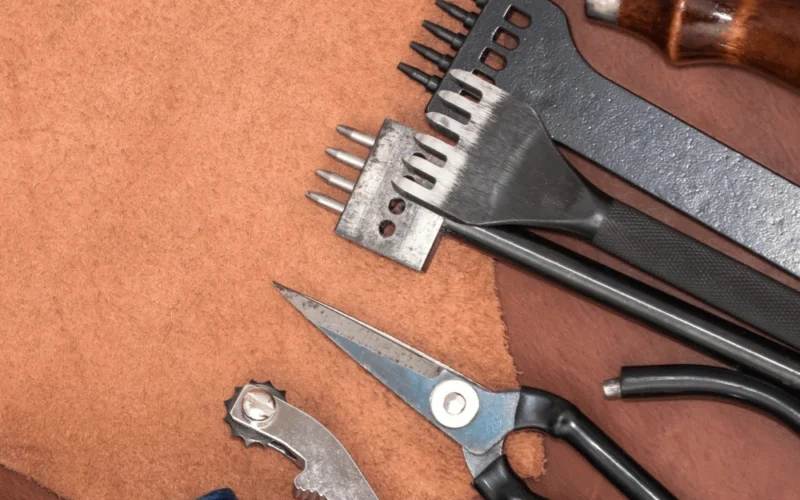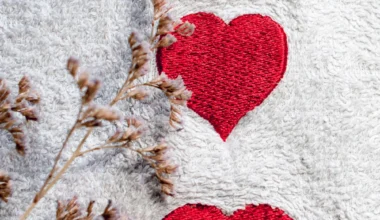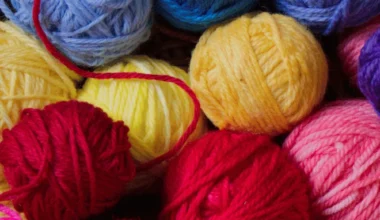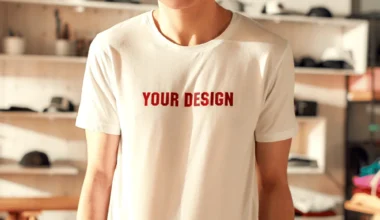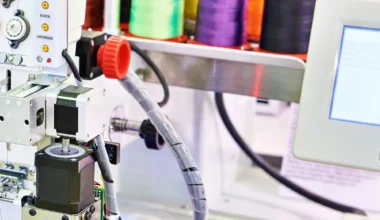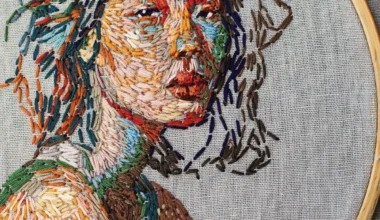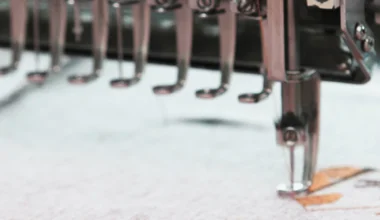Looking to personalize a gift or add a little dash of elegance to your own leather accessories? Monogramming leather is a timeless art that can add personality to your leather items.
Let’s walk you through the essential steps for how to monogram leather!
What to Know About Working with Leather
Choosing the Right Leather
When it comes to learning how to monogram leather (DIY style), not all leather is created equal. The type of leather you choose can significantly impact the final look and feel of your monogrammed piece.

Full-grain and top-grain leathers are ideal for monogramming due to their durability and smooth surface. Avoid bonded leather, as it may not hold the monogram well over time.
Thicker leathers provide a sturdy base for monogramming, while smoother textures allow for cleaner lines and sharper details. For items that will see heavy use, such as wallets or belts, choose a leather that can withstand wear and tear while maintaining the integrity of the monogram.
Preparing the Leather Surface
The first steps of learning how to monogram leather is properly preparing your surface.
Start by gently cleaning the leather with a soft cloth and a mild leather cleaner to remove any dirt or oils. Follow up with a leather conditioner to ensure the surface is supple and ready for monogramming.
Then, use a fine-grit sandpaper to lightly sand any rough areas. This will help create an even surface for a more precise monogram.
For certain leather types, such as suede or nubuck, special care may be needed. Use a soft-bristled brush to lift the nap and ensure the surface is uniform before proceeding.
Tools and Materials
Having the right tools and materials is essential for a successful leather monogramming project. Here’s a list of the essentials and how they’re used:
- Embroidery machine capable of handling leather. Ensure that the machine has the necessary hoop sizes and settings for leather embroidery.
- Embroidery hoop designed for use with leather. The hoop should securely hold the leather in place without damaging it.
- Stabilizer, an essential piece for embroidery on leather to prevent puckering and distortion. Choose a stabilizer suitable for use with leather.
- Embroidery thread in your desired color. Ensure that the thread is compatible with leather and won’t cause damage.
- Embroidery needles specifically designed for embroidery on leather. For thicker pieces of leather, we recommend using size 80/12 embroidery needles. These needles are thicker, sturdier, and a less likely to break when embroidering on leather.
- Digitizing software: If you’re creating your own designs, you’ll need embroidery design software to digitize and edit your designs before stitching. Fortunately, every Ricoma embroidery machine includes digitizing software as part of the all-inclusive embroidery package.
- Design template: A template of the design you want to embroider, either printed on paper or transferred digitally to the embroidery machine.
- Scissors for trimming excess thread and stabilizer.
- Full-grain or top-grain leather.
- Optional tools: Depending on your design and technique, you may also need tools such as tweezers, a seam ripper (for correcting mistakes), and marking tools for positioning the design on the leather.
How to Monogram Leather Using Embroidery
1. Designing Your Monogram
Creating a visually appealing monogram design is the first step in the monogramming process.
Choose a font that reflects the style and personality of the item or the person it’s for. Classic fonts like serif or script are popular for monograms, but don’t be afraid to explore modern or unique fonts as well.
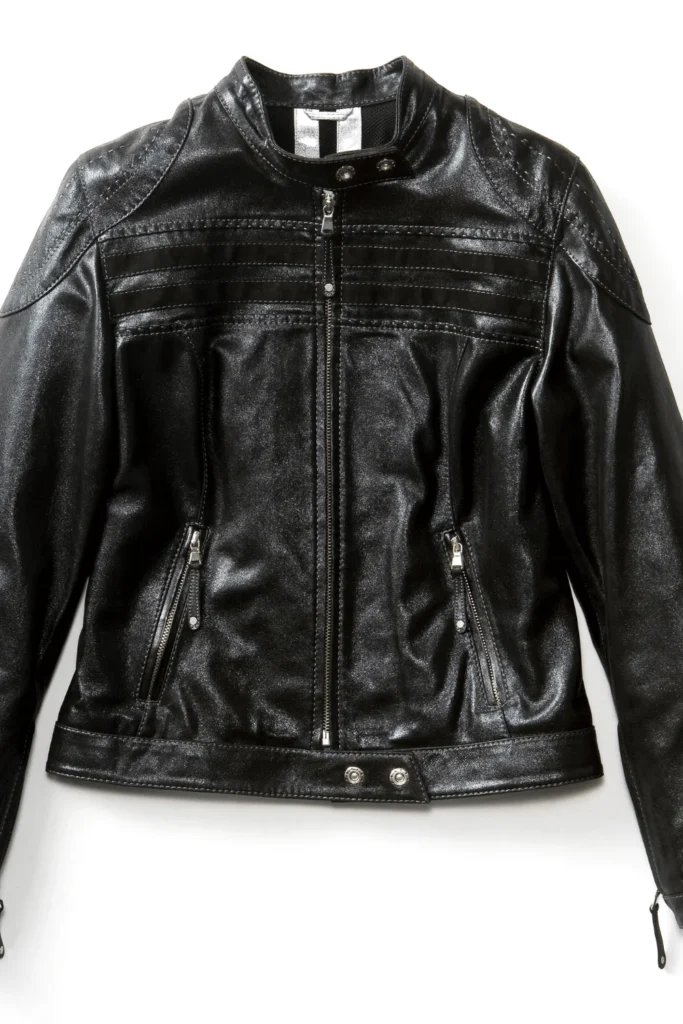
Consider the size of the leather item and where the monogram will be placed. A larger monogram can make a bold statement, while a smaller one can be a subtle accent. Ensure the placement is centered or balanced for an aesthetically pleasing look.
Before transferring, play around with different layouts, such as stacking initials vertically, aligning them horizontally, or overlapping them for a more intricate design. Use design software or sketch on paper to visualize your ideas before committing to the final design.
2. Digitizing Your Design
Use embroidery digitizing software to convert your design into a digital embroidery file format, such as .dst or .pes. This software allows you to specify the stitch types, densities, and directions for the embroidery machine to follow.
4. Embroidering Your Monogram
Hoop the leather and stabilize it using an embroidery stabilizer to prevent shifting during the embroidery process. Then, thread your embroidery machine with the appropriate thread color and needle size for leather, making sure to use a slow speed and gentle pressure to avoid damaging the leather.
Once the embroidery is complete, remove the leather from the hoop and trim any excess stabilizer.

Adding Finishing Touches
If you want, you can add additional color to your embroidered monogram using fabric markers or paints specifically designed for leather. After adding your color, make sure to add a leather sealant to protect both the embroidery and the leather from wear and tear.
Caring for Monogrammed Leather
Use a leather conditioner regularly to keep the leather supple and prevent cracking. This will also help maintain the vibrancy of the monogram.
If your monogrammed leather item gets dirty, gently clean it with a soft, damp cloth. Avoid using harsh chemicals or abrasive materials that could damage the leather or the monogram.
Over time, your monogrammed leather may show signs of wear. If the monogram starts to fade or the leather begins to crack, consider taking it to a professional leather repair specialist to restore its appearance.

By adding color and finishing touches to your monogrammed leather item, you can create a truly personalized and eye-catching piece. And with proper care and maintenance, your monogrammed leather will remain a cherished and durable keepsake for years to come.
Frequently Asked Questions: Monogramming Leather
How to Monogram Faux Leather?
Want to learn how to monogram leather but don’t want to use the real thing?
Monogramming faux leather can be a great alternative to real leather for those looking for a more affordable or vegan option. Faux leather is typically made from synthetic materials, so it may react differently to heat and pressure compared to real leather. It’s also generally smoother and more uniform in texture, but may not hold embossed designs as well as real leather, and it can be more prone to wear and tear.
Use a lower heat setting if you’re using a heat-based method like embossing. Test your technique on a scrap piece first to ensure it doesn’t damage the material.
What Type of Leather is Best for Monogramming?
Look for leather that is smooth, with minimal imperfections, and of a thickness that can handle the monogramming technique you plan to use.
Many people prefer full-grain or top-grain leather for their durability and smooth surface. Avoid overly treated leathers, as they may not hold the monogram well.
Explore Ricoma’s Collections for High-End Crafting Supplies
For those looking to elevate their leather monogramming projects, Ricoma offers a range of high-end crafting tools and supplies to help you perfect how to monogram initials on leather for beautiful designs. Explore our embroidery machines today!
